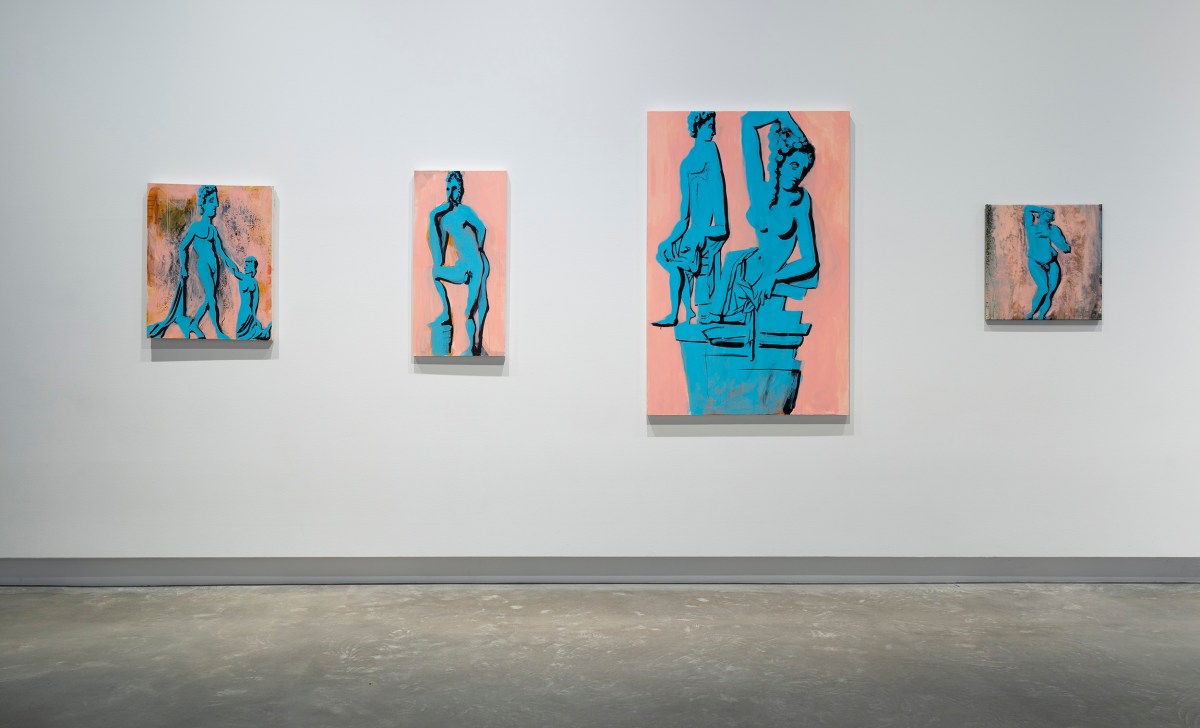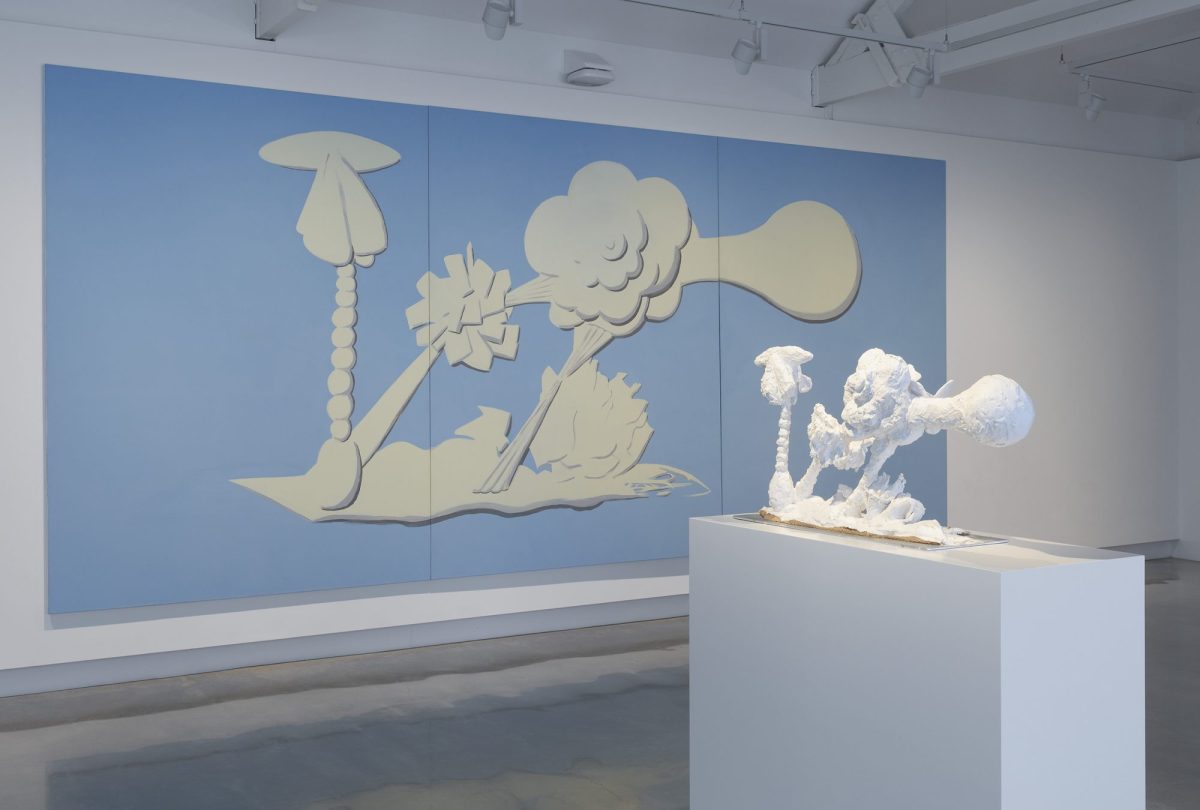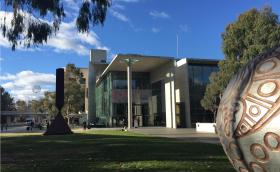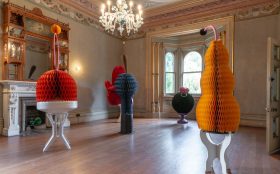Tony Clark’s latest exhibition at Buxton Contemporary, Tony Clark: Unsculpted, seeks to escape categorisation, straddling painting and sculpture, historic and contemporary.
Indeed, the exhibition opens with the speculative, presenting a series of collaborative sculptures based on Clark’s sketches and fabricated by fellow artist Joanne Ritson. These tactile, slightly alien forms, transcend the boundary of the canvas and what is visible on the pictorial plane, inviting imagination and spontaneity.
Much of Tony Clark: Unsculpted is grounded in this exploration, one that brings to mind the 2023 survey exhibition at Buxton of Nadine Christensen, whose practice similarly plays on the plethora of possibilities of sculptural and pictorial juxtaposition. And yet, despite the appealing curatorial display of Clark and Ritson’s sketches-turned-sculptures, what has been lost is perhaps this pictorial grounding.
Other than Jasperware Arrangement (2024), which directly corresponds to Clark’s painting on display Jasperware (Landscape) (1993), the sculptures exist as their own entities and stop short of bridging the translation from two-dimensional to three-dimensional, appearing to tip into the realm of decorative design.

It is with Clark’s relief paintings that this conceptual standing has the most depth, captured in Buxton’s main lower-level gallery through works spanning the 1980s to 2019. The artist’s intentionally restricted palette of light pink, light blue, raw sienna and black suspends architectural details on an allusive timeline, mixing up the grandeur and the homely to undermine what is considered high or low art.
A unique feature of this exhibition is Design for an Overdoor (Putto festoon) (2024), which mischievously frames Buxton’s museum-grade lift as if it were the doorway of a mansion and a gateway into the upper levels. Key works including Buehnenbild (Two Sections from Clark’s Myriorama) (2022), which opens up like an entrancing theatre set, and Nilotic Landscape (Buehnenbild) (2021), exemplify Clark’s fascination with ancient culture, architecture, drama and classicism. These are housed in the small room 4 gallery, which takes on an almost religious or ritualistic atmosphere, while Clark’s ‘decorated column’ paintings and miniature models occupy most of room 3.
Tony plays with historical styles as though the past was open to negotiation. Silly Tony.
– Lyndal Walker in the exhibition publication for ‘Tony Clark: Unsculpted’
The publication accompanying Tony Clark: Unsculpted is vital, arguably because it’s an exhibition that lends itself to a very specific audience who need to be attuned to the art historical and conceptual backing of the artist, and the extent of experimentation presented.
For example, the tension and eeriness one feels looking at Attis (Mao Zedong) (1988), as a viewer of Chinese background, is eloquently captured in Michael Graf’s contribution to the exhibition publication. Though some may take offence at the imagery that sees a feather-like branch protrude from the head of the Communist leader, Clark’s unabashedness is rather refreshing compared to the ‘civilised’ colonial theft of cultural iconography (“Clark also pleads ‘guilty as found!'”).
Read: Exhibition review: Gabriella Bisetto, JamFactory Adelaide
Much like the saturated and possessive silkscreen Maos by Andy Warhol, Clark approaches the historic figure from the perspective of successful visual propaganda. Mao’s imagery has become so widely repeated and recognised that to see a solitary one feels awkward and misplaced, let alone ‘tainted’ in the style of decorative arts.
Never have I seen an exhibition so well complemented (or, arguably, completed) by its publication, partly due to the closeness of the contributors to the subject and the straightforwardness that they adopt to speak of Clark’s oeuvre – whether that is an advantage or a pitfall is hard to tell.
Tony Clark: Unsculpted is on view at Buxton Contemporary from 1 November 2024 to 1 June 2025; free.






